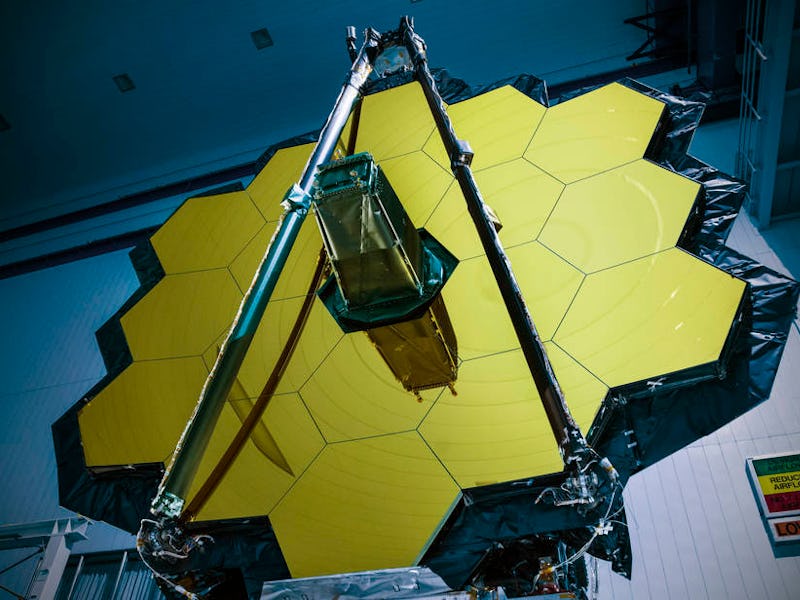The highly anticipated James Webb Telescope has passed all preliminary testing at the Goddard Space Flight Center “unscathed,” NASA announced this week, meaning it is one step closer to its orbit around the sun.
The technological marvel has a series of 18 mirrored segments that will splay out like petals on a flower once in orbit. The 21-foot mirror, made of beryllium, is designed to catch incoming infrared light from far away galaxies offering new details on the evolution of our universe. The telescope, which will replace the Hubble Space Telescope, will also be able to peer through dust to make never-before-seen planetary systems visible.
Webb has gone through a host of environmental testing such as vibration and acoustic testing to simulate the rigorous ride it will take during launch. To measure the mirror’s ability to stay intact during intense vibrations, a number of safeguards had to be put in place. The Goddard team had to make sure the telescope was in a completely clean room, keeping humidity and temperature as stable as possible so nothing could interfere with the measurements.
They then shot tiny wavelengths of visible light at the mirror, and used a high-speed interferometer to monitor even the slightest of changes that could signal damage from the vibrations. The interferometer took 5,000 frames a second, faster than the actual rate of the vibrations. This allowed the team to subtract “jitter” for clean results.
“Some people thought it would not be possible to measure beryllium mirrors of this size and complexity in a clean room to these levels but the team was incredibly ingenious in how they performed these measurements and the results give us great confidence we have a fantastic primary mirror,” Lee Feinberg, Webb’s telescope optical element manager, said in a release.
Now that the Webb has passed this training, it will move on to NASA’s Johnson Space Center in Houston for cryogenic testing. To simulate the incredibly cold life in orbit, the Houston team will put Webb in a vacuum and subject it to intense subzero temps. Once it passes this stage, it will move on to Northrop Grumman Aerospace Systems in Redondo Beach, California, for final assembly and testing before launch.
In October 2018, the telescope will be launched on an Ariane 5 rocket from French Guiana and will reach its desired orbit around the sun — about 1 million miles from Earth — one month later.
